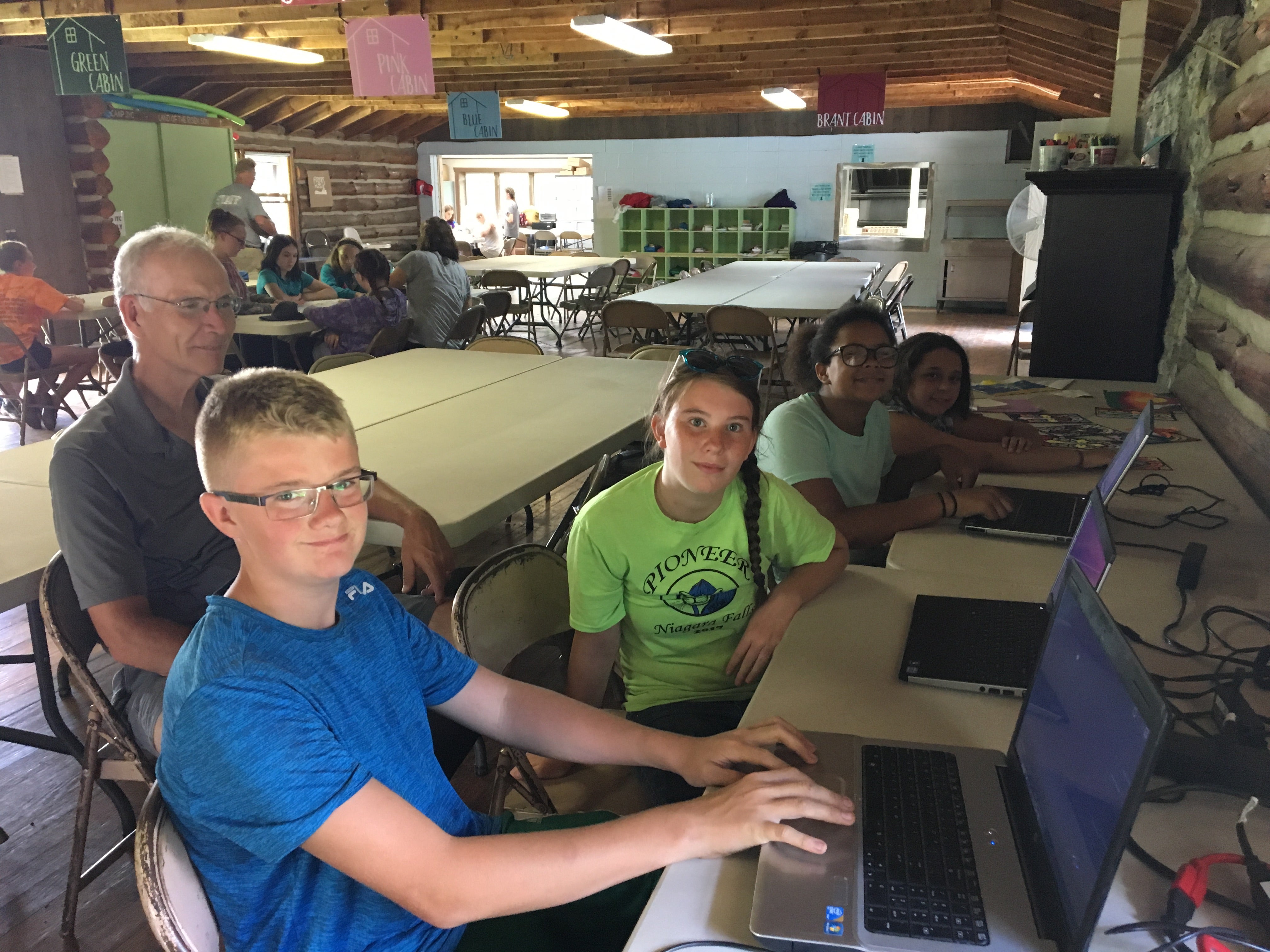As the late, great mathematician, computer scientist, and educator Seymour Papert once said, "I am convinced that the best learning takes place where the learner takes charge." Unfortunately, most schools stifle children's natural curiosity and creativity, locking down technology and reducing students to consumers of content they have no hand in creating.
This summer, I had an opportunity to test Papert's theory while teaching a session on open source technology to a small group of middle school students at a local summer camp. I used some of open source advocate Charlie Reisinger's methods from his book, The Open Schoolhouse, to give the students the opportunity to explore and create their own knowledge. Reisinger says, "In an open schoolhouse, every student is trusted with learning technology and empowered to rewire and reshape the world."
Getting ready for camp
I had only three, one-hour sessions with the students, but in that short time I taught them about open source software, including Linux, and empowered them to provide IT support for their neighbors. To encourage thrift and sustainability, I decided to use older, inexpensive, and easy-to-get hardware—five older laptop computers that were recently placed in my custody.
I also purchased a dozen or so USB drives and printed out some material about Linux from the Linux Foundation to use as handouts.
I downloaded Fedora 28 workstation, Ubuntu 18.04 LTS, Linux Lite, and Ubermix and burned the ISO files to the USB drives using Etcher. I also created a classroom wiki with links to the distributions I had chosen and the Linux Foundation's educational materials.

Kids learning Linux at Camp JYC. Photo by Cassie Hatch.
Setting up the hardware
At the start of camp, I told the students that people are usually convinced that a computer with a crashed operating system is no good anymore. One of the five laptops we used was 10 years old, and the others were five or more years old. One of them was a "crashed" Windows laptop.
I showed the campers that these computers still have value by live booting one of the prepared USB drives containing a live Linux distribution. Then I demonstrated how this "broken" computer could handle word processing, email, and other common activities. I used the Linux Lite USB device on the 10-year-old computer to prove that, despite its age, this computer could still do many useful tasks. They were amazed that this computer still worked well.
Next, I walked them through using a Linux live boot device to start up a laptop. I explained the similarities and differences between Fedora and Ubuntu, including each one's installation procedures, and let them decide which distribution they wanted to use. The students applied this information (and my assistance, as needed) to install Linux on the other four laptops.
After they finished, I asked them if they thought they could teach someone else how to do what they had just learned, and they assured me they could. The children were fascinated by Linux, which they had never experienced before, and how useful it is. And there was still time to learn more.
Using applications
Once the installation was complete and usernames and passwords were assigned, I introduced them to some applications. They got experience with LibreOffice Writer, GIMP, Audacity, Stellarium, Celestia, GNU Chess, Sudoku, GCompris, TuxMath, and Inkscape. I taught them how to configure LibreOffice to save in a .docx format so they could submit their writing assignments to teachers who use proprietary word processing software. They were literally like kids in a candy store!
I explained some of the command-line utilities I thought they might find interesting, like cal. I demonstrated how we could find out which day of the week the Declaration of Independence was released by entering: $ cal 7 1776 at the command line. They applied that knowledge to find out the day of the week they were born.
We examined the top command and learned how to look at all the processes running on their computers. I introduced them to the kill command and demonstrated how to kill a process. I showed them how to create a file with the touch command and see that file inside a directory with the ls (list) command. Then, to test their learning, I quizzed them and asked them to demonstrate the commands again.
A couple of the students were already proficient Python coders; since these laptops were equipped with IDLE3, with a bit more time, I could have taught them how to install open source software that supports additional programming environments.
Wrapping up
The students learned to do a lot very quickly. At the end of our time together, I gave each their own Linux installation media to take home. To inspire them to learn more about Linux, I gave them a handout with links to the Fedora, Ubuntu, Linux Mint, and other distributions along with simple instructions on how to download and create bootable USB drives and installation media.
Though our time together was brief, I am convinced that these preteens and young teens can master the complexities of basic IT support and serve as resources in their communities. I encouraged them to use their new skills to help others and to share Linux and other open source software with peers in their community.
It's wonderful to provide people in your community with opportunities to learn about Linux and open source software. These skills are in high demand in the workplace, and people of all ages should have the opportunity to experience these powerful tools.
If you'd like to give more students a chance to compete in a world that is increasingly open, I recommend reading The Open Schoolhouse by Charlie Reisinger. For more inspiration, follow some of the people doing great work with open source in the classroom, including Andrew Dobbie; the Asian Penguins (follow their adventures on Twitter); Aaron Prisk; and Patrick Masson (check out his FLOSS Desktop for Kids Incubator Project).







2 Comments